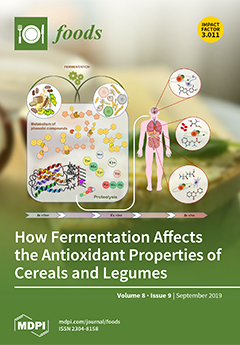The purpose of this study was to determine whether raw milk, unpasteurized dairy products, pork, and beef available for sale in the Kujawsko-Pomorskie and Wielkopolska regions in Poland are contaminated with
Campylobacter spp. bacteria and may be a potential source of infection. For
[...] Read more.
The purpose of this study was to determine whether raw milk, unpasteurized dairy products, pork, and beef available for sale in the Kujawsko-Pomorskie and Wielkopolska regions in Poland are contaminated with
Campylobacter spp. bacteria and may be a potential source of infection. For isolated strains, antibiotic susceptibility and the presence of genes responsible for virulence were examined. Material for research included 1058 food samples collected between 2014 and 2018 with 454 samples of raw milk and unpasteurized dairy products (milk from vending machines, milk from owners of dairy cows, cheese, milk cream) and 604 samples of raw meat (pork, beef). The results indicated that 9.3% of the samples were positive for
Campylobacter spp., and
Campylobacter jejuni was predominant in this study.
Campylobacter bacteria was not found in milk collected from vending machines, as well as cheese and milk cream samples.
Campylobacter was noted in 12.7% of beef samples, 11.8% of raw milk purchased from individual suppliers, and 10.9% of pork samples. Resistance to erythromycin (2.0%), azithromycin (3.1%), gentamicin (4.1%), tetracycline (65.3%), and ciprofloxacin (71.4%) was determined using the disc diffusion method. Furthermore, the prevalence of
racR,
sodB,
csrA,
virB11,
cdtB,
iam, and
wlaN genes were examined using the PCR method. The
sodB,
csrA, and
cdtB genes exhibited the highest detection rate, but none of the genes were identified in 100% of the isolates. Statistically significant differences between the presence of virulence marker genes, including for
iam,
racR, and
csrA markers, were noted among different sources of the isolates. Differences in the distribution of
iam, wlaN, and
virB11 were also shown between
C. jejuni and
C. coli strains. As a result of the analysis, it has been concluded that unpasteurized milk, beef, and pork could be a sources of
Campylobacter pathogens. Moreover, this study revealed virulent properties of
Campylobacter isolated from such food products and high resistance rates to fluoroquinolones, which may represent difficulties in campylobacteriosis treatment.
Full article






